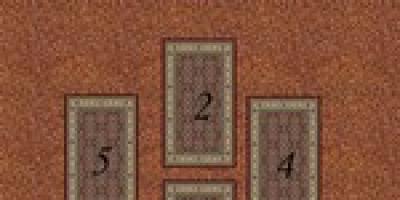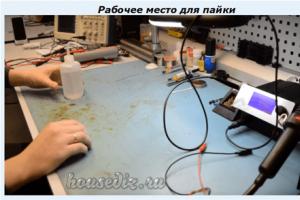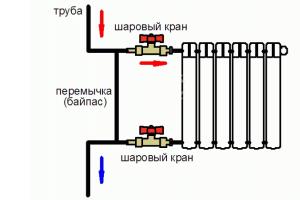Finally installed this multifunctional miracle of technology. Yes, China, many will say. At first I hesitated, and then I thought, why is my Alpine, made in China, better? When I installed it and turned it on, I was even a little surprised at the sound quality.
In general, I'm pleased with the sound. The most important thing, of course, is the navigation in this thing - I’m tired of the navigator on the suction cup - the wires are always dangling and it blocks the view. And here everything is in one bottle.
The installation went without any problems. I cut out the shelf, ran the wiring (there was a separate antenna for navigation), connected it and voila... although no, not voila. I was annoyed that with the original frame it’s not ice at all, but without it it’s just a crapshoot.
It was decided to think and sculpt something. After installing the PTF, I had epoxy resin and fiberglass left over, and I began to come up with a frame.
First, I removed the console, dragged it home and covered the radio with masking tape; I covered the frame very carefully in order to repeat the shapes and sizes.

After pasting with tape, I marked the border where the frame will actually be made.

And the process of sculpting and cutting actually began. I cut the fiberglass into the desired shape.

I applied a layer of resin to the tape and placed the glass, then soaked it generously. This happened several times. This is what it looked like.

Then I removed this structure, basically without making much effort, the masking tape came off well from the console.

Well, here's what we actually got:

This is what ended up happening to this piece of glass and epoxy

It looks clumsy, of course, but it completely and perfectly matches the geometry of the console and the radio frame.

And also, the parking sensor display suffered a move due to the removal of its shelf =)) Now it’s here

And tomorrow we will have the puttying process.
Silent radio frame
Today, while cleaning my computer from accumulated garbage, I came across one small photo report. Maybe it will be useful to someone, but someone will call it crazy. In any case, I decided to post it on the blog, whatever it is. Well, as you already guessed from the title, we will pick the radio frame.

The photo report was taken when I still had a Honda Civic EK3. The car did not have a stock cassette player, which never bothered me. I drove without music, enjoyed the sound of the engine and VTEC, but extraneous sounds tried to spoil this idyll. It crunches here, it rattles here. The last seller of the car (which I will write about later) swapped the engine from a D15Z6 (115 hp) to a more powerful D15B (130 hp). For those interested, read the post “Engines on the Honda Civic VI.”
He changed the engine, but left the computer (brain) as standard. This caused the revs to constantly fluctuate and it was impossible to set them. But it was impossible to find a new suitable brain for the budget available at that time.
Actually, because of the wrong brains, the speed was floating, which caused vibration in the car at low speeds. The loudest crack was the frame for attaching the radio. Everything had to be done carefully so that it wouldn’t stand out or rattle. After surfing the Internet, I came across an interesting method on some forum and decided to apply it. How I made the frame for the radio tape recorder quieter with my own hands - read on. All pictures are clickable.
Making a frame for teapots))).wmv
Frame didn’t suit me, so leave a link to frame I won't! And if you’re still wondering where you ordered it, then...
Adapter frame for radio from China.
Glue it together frame locally to eliminate mistakes...
To carry out the work we will need:
2. Electrical tape in the color of the frame (in my case, black);
3. A sheet of paper + stationery scissors to cut the paper and tape.
Because The frame from the radio was black, so I matched the electrical tape to the same color. In principle, now you can find it in any color, so there shouldn’t be any problems. Using it, you need to make several layers from the bottom of the frame, i.e. The electrical tape will be located under the radio. Thanks to its elasticity, it will absorb vibration and dampen the unpleasant plastic crackling in the cabin. It looks something like this:

Then, I took a regular sheet of paper and cut out 2 small rectangles:

Here many will ask: “What nonsense? What else do we need? Oo.” Everything is extremely simple. From the resulting rectangles we will make small spacers for the radio frame, which will also absorb vibrations. We simply fold the pieces of paper into several layers and insert them into the empty cavities of the frame.

Well, as a final touch, I sealed these “spacers” in the radio mounting frame with electrical tape. For what? HZ. I just wanted it that way

Well, here's the final result:


I can’t say that this is a panacea for all diseases of the radio, but despite this, in my case everything worked. The radio frame stopped making nasty noises when vibrating, which was very nice. So to speak, I did a little soundproofing of the car interior with my own hands. Just a joke of course. This is not soundproofing at all, but only a local treatment of the problem, but it works. Visually, the frame of the radio has not changed, because All the electrical tape ended up under the radio.
If you have any questions, ask. I will try to answer everything in detail. That's all for today. Until new posts.
The standard audio device placed in the car does not suit all owners. But replacing equipment is associated with compatibility problems between the radio panel and the central trim of the instrument panel. The adapter frame for a 2 DIN car radio allows you to close the gaps formed during installation, and also ensures a neat appearance of the installed equipment. Similar elements are used when installing small-sized players instead of original head units.
Purpose
Car manufacturers complete their products with dashboards designed for the installation of original acoustic equipment. On basic configurations it is possible to use plugs or adapter inserts designed for use with 1 DIN format radio tape recorders (178*50 mm). The decorative frame for the radio is used when installing full-size 2DIN players; The product allows you to harmoniously fit the front panel of the equipment into the interior of the cabin.
Many car owners change their head equipment to alternative products that have a rectangular front panel. In this case, the adapter frame for the radio ensures compatibility between the front of the player and the hole in the instrument panel trim. The transition element is made of plastic, similar in color to that used in the design of the head unit and interior elements of the car.
Ready solutions
The finished frame for the car radio is produced by the car manufacturer. The product is intended for conveyor installation of the element on cars initially equipped with a full-size radio. An example is the front frame of the Lada Granta Lux car, which allows you to fit a 2-din radio with a rectangular screen. Also, ready-made transition elements are manufactured by small companies. The parts are intended for the integration of head units (from the list of compatible products) into cars.

How to make a frame
Factory adapter frames for car radios do not cover the entire range of products. To manufacture the element, products of a similar purpose are used, borrowed from other machines. There are structures made of wood or organic glass, which are then puttied and painted to match the color of the car interior.
1 DIN
Making a frame for a 1 DIN radio is used to mount an additional player, while keeping the standard audio device in the car. Before making a frame, you need to decide on the installation location of the future structure. The installation point must ensure that the radio display is visible and the controls are accessible from the driver's seat.

To hold the head unit, it is necessary to make a plastic or iron frame, which is attached to the dashboard or a metal frame located inside. The mounting shaft of the radio is attached to the power part of the structure with screws. After this, you need to cover the plastic of the dashboard with masking tape, since at the next stage the frame body for the 1 DIN radio is formed from sculptural plasticine.
Before application, it is recommended to warm up the plasticine on a warm radiator, then the material is applied layer by layer to the installation site of the equipment. Each layer is pressed tightly against the previous one, which avoids air voids. After forming the basic configuration of the body, it is necessary to cool the material for 2-3 hours, and then a finishing layer of plasticine is applied, which forms the appearance of the structure. The final surface treatment is carried out with fingers dipped in solvent.

After this, you need to cover the instrument panel and seats with covers; the resulting body is filled with polyester resin. The resulting matrix is used to manufacture a finished transition frame, which is then polished and adjusted to the installation site. To manufacture such a product, experience in working with polyester resins is required, because... If you lack knowledge, you can irreversibly damage the car's interior trim elements. Additionally, the acoustic wiring needs to be improved to ensure the functionality of 2 players.
2DIN
The simplest method for making a frame for a 2 DIN radio with your own hands is to trim the finished element. The advantage is that the factory fasteners are preserved, and the shape of the part ensures a uniform fit to the mating surface. For modification, it is necessary to mark the contours of the future mounting socket, and it is necessary to take into account the possibility of installing the radio cassette in the instrument panel. Trimming is done with a hand tool, then the edge is processed with a file and sandpaper.
The car owner can make his own transition frame using epoxy mastic or cold welding. Before starting work, you need to cover with masking tape the places on the instrument panel that will come into contact with the mastic. A player or dimensional model is installed in the mounting hole; Wedges are used to set gaps. The front of the 2DIN device is also covered with tape. To further strengthen the future structure, it is recommended to use copper or steel wire with a diameter of 2-2.5 mm.
Guide grooves are formed from scraps of plastic on both sides, which are used to obtain clamps for the future decorative element. The resulting gap is filled with plastic material. After hardening, the product is carefully removed and processed mechanically; The central part is carefully measured to comply with the dimensions of the 2 DIN standard.

After this, the frame for the 2 DIN radio is installed, and if defects are detected, the part is modified. At the last stage, the resulting product is polished, which is then primed and painted in 2-3 layers in the required color.
The electronics market currently offers motorists a large selection of radios that differ in cost, manufacturer, features and functionality. Many brands are involved in the production of such devices, so the differences between car radios may lie not only in functionality, but also in size. To ensure normal installation of the system, frameworks are used; read more about them below.
[Hide]
What if the new frame doesn't fit into the existing dashboard?
If you are faced with the problem that the new one does not fit your center console, you have several options to solve the problem:
- purchase a new audio system;
- buy a new frame.
Buying a new radio
An easier way to implement it is to exchange the purchased car radio in a store or buy a new device if your budget allows. Of course, this option is not suitable for everyone. When purchasing an audio system, it is best to be guided by the dimensions of your existing radio or the technological connector for its installation. Therefore, before going to the store, you should use a tape measure to measure not only the width and height, but also the depth of immersion in the panel. With the dimensions in hand, you can immediately narrow down the range of audio systems that will suit you when purchasing.
But it must be borne in mind that this method does not always give the desired result. Even if the system fits into the seat, you need to make sure that the radio tape recorder can dock normally. One way or another, the frame of the purchased radio should in any case fit normally with the installation site.
Purchasing a new frame
4. When sanding is completed, all you have to do is putty the workpiece, cover it with primer and paint it.Price issue
If you don’t want to make an adapter yourself, you can always buy one in a store. Of course, the price in this case will depend on the car radio model. On average, the cost of the frames themselves ranges from 300 to 3,000 rubles. If you buy an adapter with part of the center console, then its cost can be about 5 thousand rubles.
The statement that any on-board device must be securely and correctly secured is trivial. Typically, universal fittings are included in the delivery package, and standard devices imply a similar design with factory elements.
Problems with installing an audio device usually do not arise due to the accessories included in the kit. But there are always exceptions; universal radio mounts can help when you need to install a non-standard model on a used car, and do it yourself.
Universal kits provide easy DIY installation, but cannot always provide the necessary reliability and structural protection for your radio.
Fastening Options at a Glance
On sale you can find several options for devices for 1 din and 2 din, including modular modifications that are complete solutions. The most modern, of course, is a robotic elevator, which includes moving elements. This option should not be considered publicly available. In most cases, well-proven methods are used.

Installation to the dashboard
In some cars, in order to ensure the reliability of the installation of the audio system and the absence of risks of failure as a result of vibration, the installation is carried out to the dashboard, that is, to the power fittings of the car. The entire dashboard is supported on a pipe, to which it is fixed using specialized corners. This installation option is practiced in a number of premium cars, for example, Toyota, Mazda and others. A well-thought-out power structure, in turn, ensures a quiet interior.

The version of the “power” mounting of the media system complements the standard shaft, but installers often remove these very “power” corners and install the radio only on the “light” fittings of the shaft. This option cannot be considered reliable and is designed for extreme driving and minor road accidents, which could result in damage to the audio system.
Where can I find the necessary spare parts? In the catalogs of spare parts for your car, for example, the corner numbers for Toyota Carina are as follows - 86211-20330 and 86212-20320. It looks roughly like in the photo. A rigid mount for a 2 din radio is implemented in a similar way.
Installation using a shaft
Installation of a 1 and 2 din radio using a shaft without additional fixation is practiced by AvtoVAZ. Basically, it is customary to attach the device to the center console using a shaft. In turn, the media system is secured with ordinary plastic latches. This is the so-called screwless fittings, also used in Lacetti. Despite all the convenience of installation, it turns out that, in fact, the device hangs and cannot withstand even a small shock load. At the same time, the device weighs about 1 kg.
The result of such an installation is clear without additional explanation; in addition, such an installation can also damage (or simply break) the front console. Most motorists do not think about why additional holes are made in the sides of the car radio housing.

They are made specifically for high-quality installation of din 1 and 2 to the dashboard, using the corners described in the first option. These are factory mounts that complement the standard shaft or frame. They can be purchased at automotive stores. Some suppliers sell them as a radio mounting bracket. But this is a wrong interpretation; the bracket and frame are similar installation methods, but different from those described.
“Easy” installation options may result in the device simply cracking in several places. And this will happen precisely because of the characteristics of ill-conceived fastening fittings.

The lack of installation without rigid fixation first manifests itself in the form of extraneous noise. Then the console also bursts. If you want to avoid this, attach the car radio initially correctly, as specified by the manufacturer.
Basket and other options for shaft-type fastening fittings
The shaft, basket, 1 din frame and double din versions are modifications of the shaft installation. But as mentioned above, not all designs provide the necessary rigid position for the car radio, which will protect it from damage at the time of impact and driving on uneven roads. Manufacturers of original spare parts and replicas offer various kits, including those consisting of several additional parts assembled into a single mounting module.
Screwless installation for 1 and 2 din, implemented, for example, by Lacetti, was discussed above. This is very convenient for self-installation, but does not provide structural rigidity. Universal solutions with guaranteed reliability use snap-on mounting and additional fastening with angles to the power fittings.

Conclusion
The problem for the final car owner is that the fittings for installing the devices are not well thought out in their design. For this reason, it is better to stick to the installation option recommended by the manufacturer. Moreover, this applies to single-din and double-din versions. In the second option (2 din), the weight of the car radio may be greater, and the build quality is sometimes worse. The likelihood of failure due to vibration is higher.
The only way to ensure long-term operation of the media system is to use the 1 and 2 din mounting option proposed by the manufacturer. There may be exceptions, for example, mounting the Kia Spectra audio system on two brackets can hardly be called reliable. A double-din car radio without additional fixation will not withstand long-term high-speed driving.

Some craftsmen eliminate installation deficiencies or lack of devices with their own hands, but this is only possible for people who know the design of their machine well. The 2 din radio should always be attached to the power fittings of the car. The reliability of the screwless installation of the same Lacetti can be tracked in reviews from motorists.








